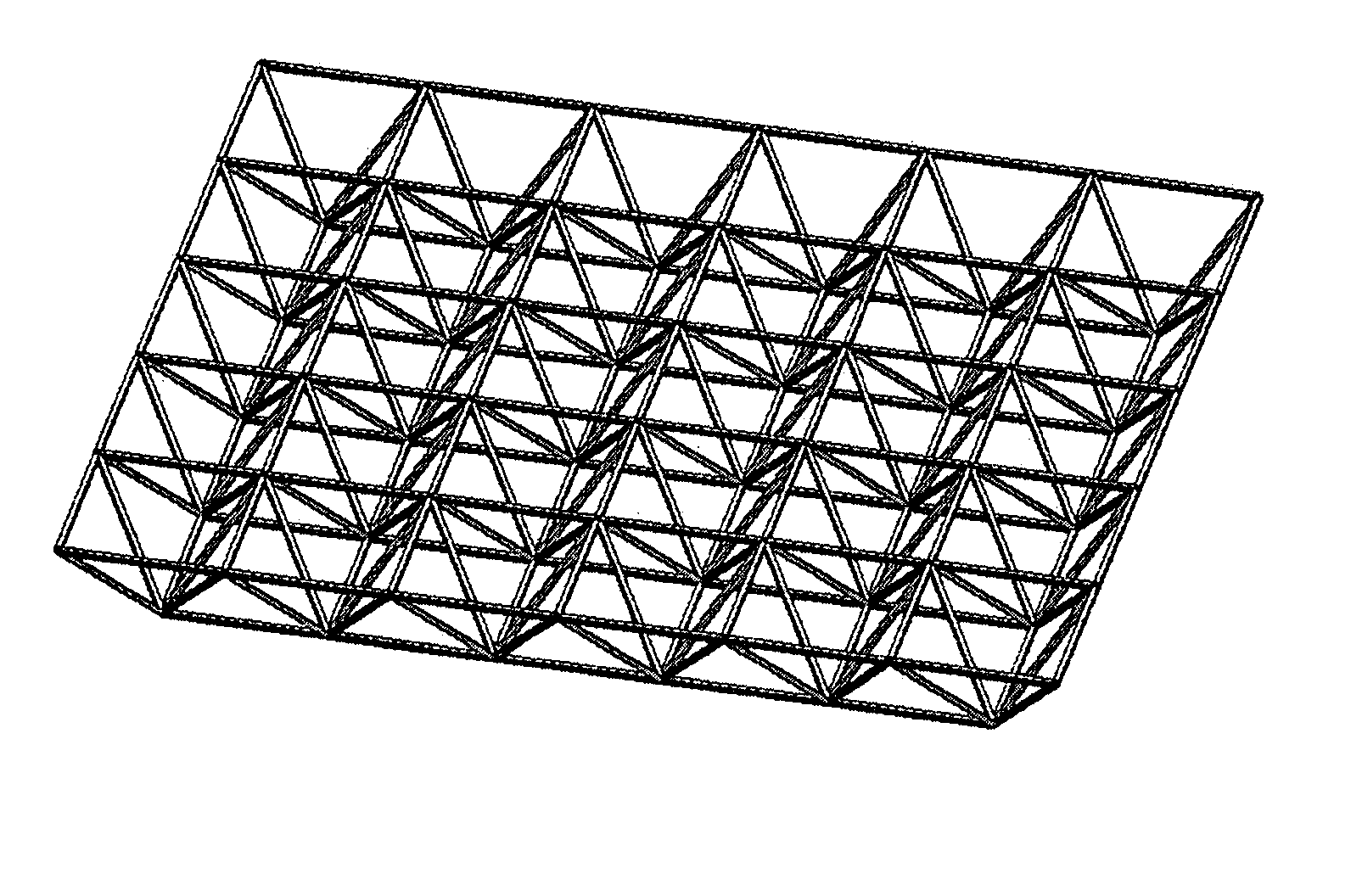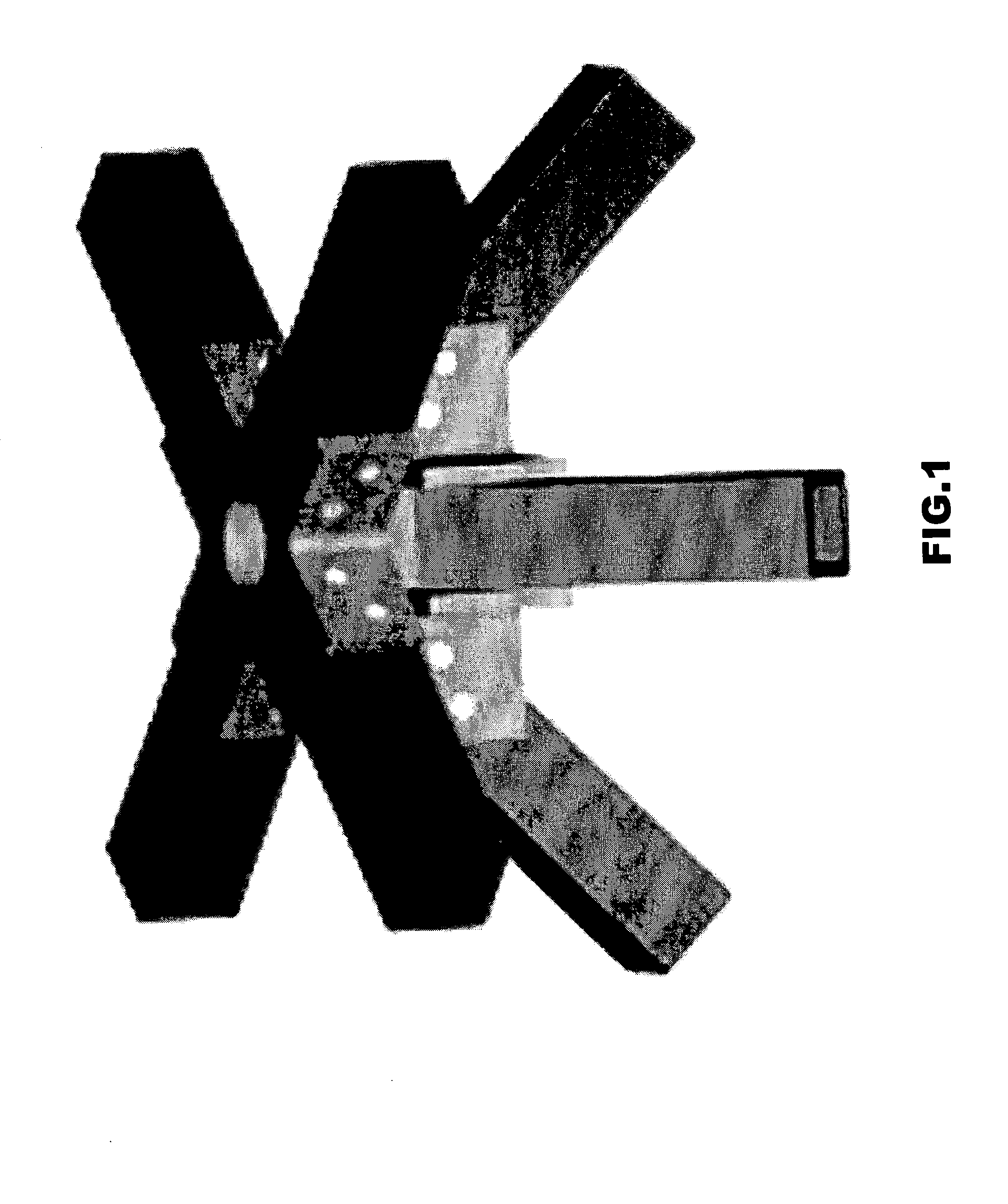Connection node for a universal truss joint and double layer grid
a technology of connecting nodes and trusses, applied in the direction of girders, joists, building roofs, etc., to achieve the effect of simplifying the problem of attachment and simplifying the connection
- Summary
- Abstract
- Description
- Claims
- Application Information
AI Technical Summary
Benefits of technology
Problems solved by technology
Method used
Image
Examples
Embodiment Construction
[0022]FIGS. 5 through 7 illustrate the existing convention for member orientation in double-layer-grids. A wide-flanged member was chosen for these examples to help visualize member orientation. As seen in FIG. 5, the diagonal member in the foreground has the web oriented vertically as do the others. FIG. 6 shows a joint along the bottom chord in plan view. The intersections of the diagonals trace a cruciform which indicates that the flat surfaces of the diagonals are in separate planes. FIG. 7 is a close-up of a joint from FIG. 4. This illustrates that the flanges of the members are not parallel to the plane defined by the row of diagonals in each half-bay.
[0023] The DLGC joint layout shown in FIG. 8 reveals that the webs of the present invention are not in a vertical orientation. FIG. 9 demonstrates that opposite pairs of diagonals have a member orientation that makes them co-planar as evidenced by a straight line at the intersection—two intersecting planes make a straight line. ...
PUM
 Login to View More
Login to View More Abstract
Description
Claims
Application Information
 Login to View More
Login to View More - R&D
- Intellectual Property
- Life Sciences
- Materials
- Tech Scout
- Unparalleled Data Quality
- Higher Quality Content
- 60% Fewer Hallucinations
Browse by: Latest US Patents, China's latest patents, Technical Efficacy Thesaurus, Application Domain, Technology Topic, Popular Technical Reports.
© 2025 PatSnap. All rights reserved.Legal|Privacy policy|Modern Slavery Act Transparency Statement|Sitemap|About US| Contact US: help@patsnap.com



